Yesterday I completed my objective of visiting all five Utah National Parks on this road trip. Zion, Bryce Canyon, Capitol Reef, Arches and Canyonlands. Last week I hiked in snow showers at Bryce Canyon on a day when it was 35 degrees at 9,200 ft. Yesterday I hiked for miles in Arches National Park on a day when it was in the low 90s.
My legs ache from walking. That is a good sign considering I spend so many of my days sitting stationary in front of a computer screen.
For the first time ever I filled up a 16 GB memory card with photos in a single day.
This is the tenth and next to the last day of my road trip.
After the dust has settled I will write detailed reports of the National Parks in Utah over the next two weeks with maps and resource links. I have had three stays at Best Western for the $50 promo and two stays at Choice Hotels for the 8,000 points after two stays promotion ending today. Add in a few resort nights and this has been one productive hotel tour too.
The Colorado River
The Colorado River begins in Rocky Mountain National Park about 60 miles northwest of Denver. There will need to be another road trip in my future to see the National Parks of Colorado.
On this trip I first sighted the Colorado River at a rest stop off I-70 in Glenwood Canyon.
Glenwood Canyon, Interstate 70 near Glenwood Springs, Colorado.
There are amazing bike trails from Aspen to Glenwood Canyon for a 40 mile or so journey. Check out rails-to-trails website.
Leaving Colorado
I followed the Colorado River for the first couple of hours yesterday from Grand Junction, Colorado to Moab, Utah. Finally, after ten days of road travel, the skies had cleared for the sun and the heat was turned on.
Time to Take the Back Roads Again
I spent eight hours hiking and eight hours driving for an incredible 8am to midnight day in the deserts of Utah.
The desert is about perspective. Most of us passing through Utah on I-70 get the perspective of the desert through a piece of glass from the comfort of an air conditioned vehicle. On the ground in the 93 degree sun hiking over rock and through sand is a different perspective that can be exhilarating, exhausting or extremely dangerous and life-threatening. I had the first two sensations yesterday in the desert. I met a guy from Colorado while hiking in Arches National Park who had experienced the third kind of outdoors sensation when he took a wrong turn on a deep canyon trail hiking in Canyonlands National Park last week. He ran out of water on his backcountry wilderness trip. He told me since the movie ‘127 Hours’ that there has been a need for more rescues in the Canyonlands park. That park is truly remote once you step down from the roads on the canyon rim.
Morning Blessings
I feel any day with a wild large animal sighting is a great blessing. I had my camera ready this time to photograph this pronghorn off Highway 128 on the way to Moab, unlike when I saw the three bighorn sheep the other night in the Rocky Mountains.
I sighted this pronghorn within a couple of minutes of getting off I-70 in eastern Utah. Highway 128 is the back road to Moab and follows the Colorado River.
La Sal Mountains, Utah rise over 12,000 ft. These mountains were the dominant landmark for my day around Moab, Arches and Canyonlands.
There were no other cars driving west in the morning to Moab.
Colorado River in eastern Utah looks like a pastoral setting before it enters the canyons a few miles south of here.
“All the mountains, all the deserts, go for miles and miles around. We have driven for years now baby, just to get back to a place we had already found.” – The Wildest Times of the World – Vonda Shepard.
Life in the desert renews each year. May is a beautiful time with colorful flowers.
While there were only a few cars driving west on Highway 128, there were convoys of vehicles coming the opposite direction in what looked to be adventure tour groups coming from Moab.
What I assume is a Moab 4-wheel-drive adventure tour group heading east on Highway 128 alongside the Colorado River.
A few miles east of Moab the landscape turned back into Navajo sandstone seen in many desert regions of Utah.
Sandstone cliffs above the Colorado River.
Moab was a brief stop. Restaurant dining and souvenir shopping were not in my plans and there was not much else I saw happening. The main benefit I saw to Moab is its close proximity to Arches and Canyonlands National Parks.
Moab is the only place for miles and miles around for restaurant dining.
I found this view of Moab from Arches National Park more to my liking. The ridge of rock is the Moab fault showing where the earth thrust the rock 2,000 feet higher on the west side the valley.
Arches National Park has about 2,000 rock arches, the highest concentration of arches in the world.
Turret Arch, Arches National Park.
North Window Arch, Arches National Park.
The arch provided shade in the hot sun.
It was a spiritual sensation in nature with grand views.
Hiking hours in the sun had me cooking. Traveling through a slot canyon where I could touch both sides of the walls made me realize how cool the shaded rock felt. I rested with my face and forehead touching the rock for a marvelous way to cool my head.
View from beneath North Window.
Windows Arches.
North Window looking south across the desert. It is amazing in this landscape where there are thousands of square miles of desert, that little pockets of extraordinary geological formations appear that could be easily overlooked.
Hiking to Sand Dune Arch is where I faced up to nature. Literally. I cooled down by placing my face on the shaded rock for several minutes.
Last night, driving for hours in my car, I could still feel the sand coating my head from the hikes. I showered before hitting the bed.
Sand Dune Arch.
There were a few hikers waiting for a woman to navigate her way out through the slot canyon opening. She commented she was afraid of heights, yet there was no risk of falling very far. Canyonlands National Park is the place where someone with a fear of heights will freak out.
It is possible to stand right on the edge of the canyon rim at elevations of over 6,000 ft. and peer into the abyss.
Actually the plateau gazes down on canyons within canyons within canyons.
Canyonlands National Park.
Green River in Canyonlands National Park.
The Green River and Colorado River merge deep in the park.
I could sit here writing all day, but that is next week’s task. Now I am off for my last day in Utah parks with a plan to visit Cedar Breaks National Monument and revisit Zion National Park on a clear sky day.
I’ve been loving this desert life.





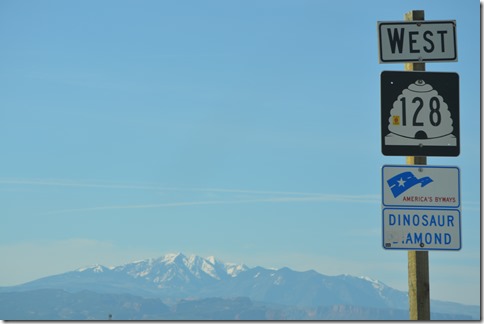
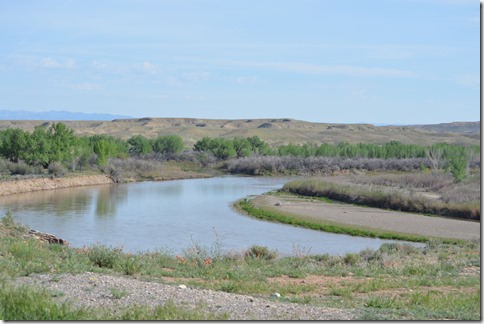
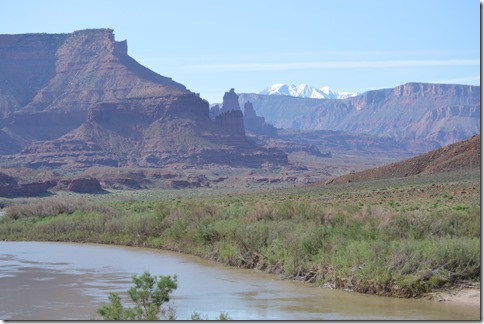
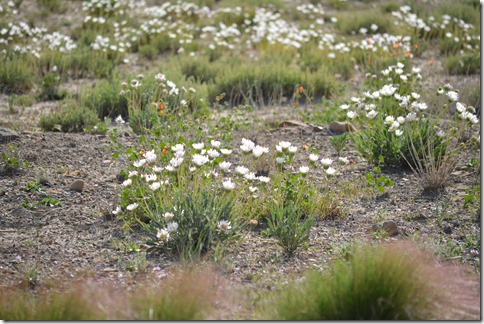
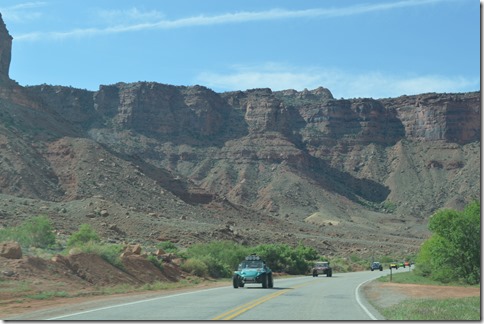
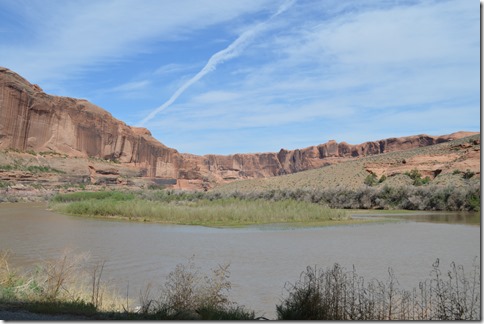
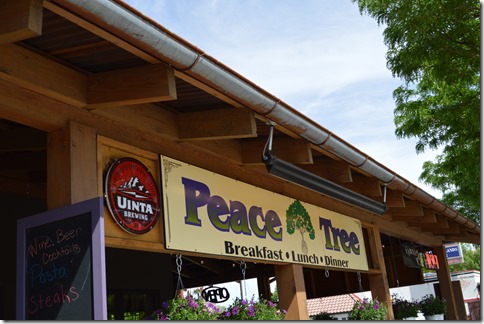
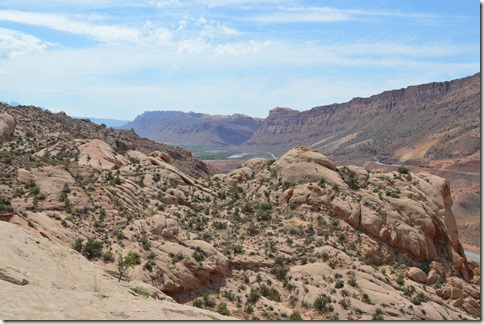
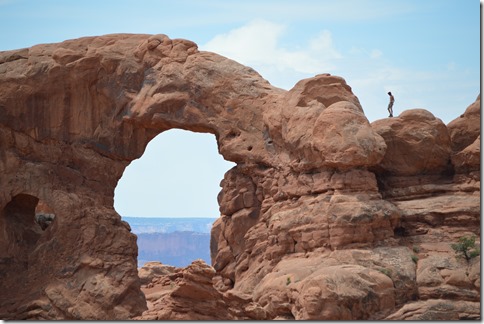
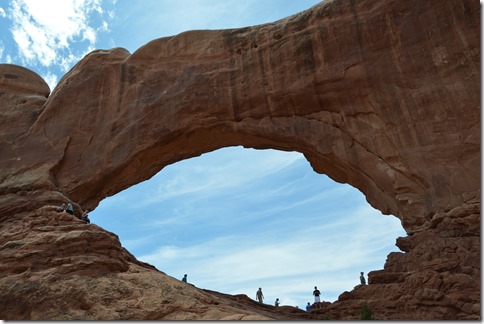
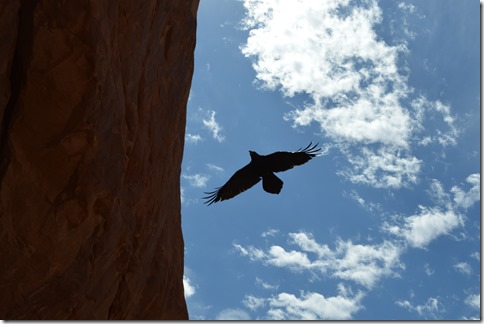
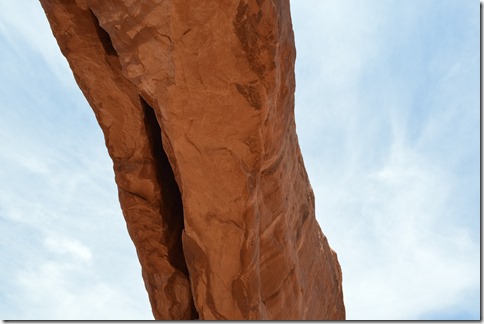

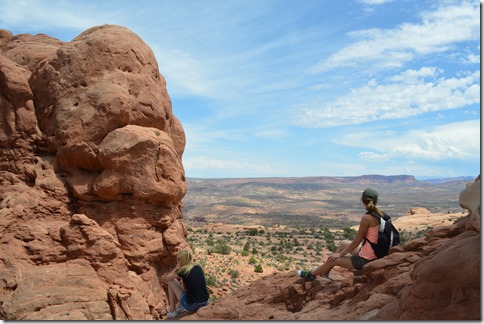
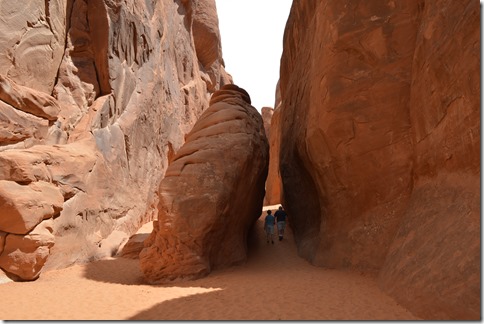
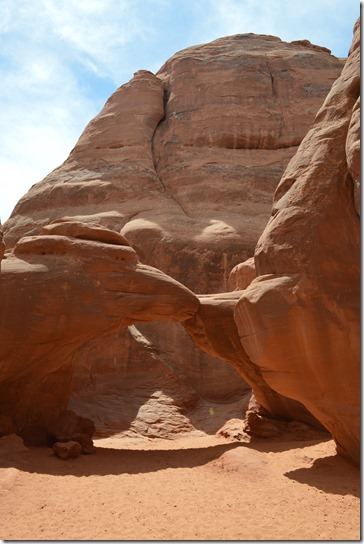
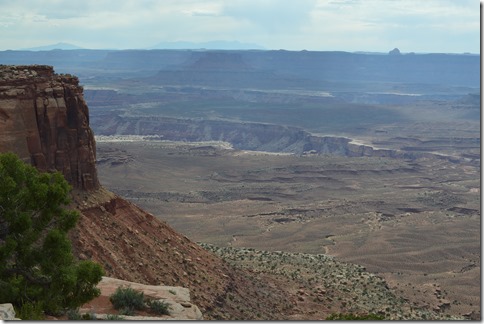
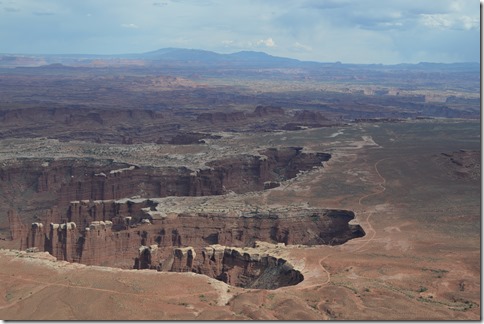
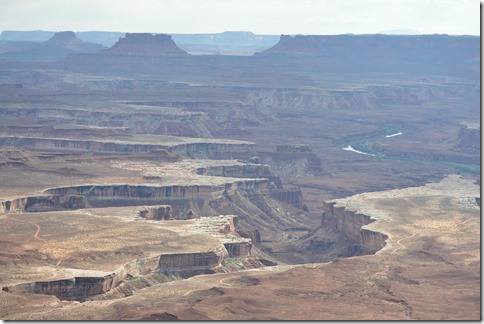
7 Comments
Comments are closed.